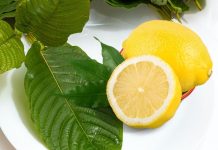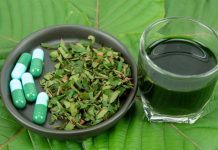Have you ever experienced uncontrollable muscle bulging, hardening, or tightening? It’s referred to as a muscle spasm. Anyone can experience this kind of cramping for various reasons and in many parts of their body. Spasms in the abdomen, arms, hands, and feet are quite common. You can also experience muscle spasms in your rib cage, hamstrings, quadriceps, and calves. Simple muscle spasms are frequently brought on by strenuous exercise and intense physical activity. Patience, rest, light stretching, and muscle massage can all help relieve the pain.
Although muscle spasms hurt, relief is available. Your doctor may suggest medications like metaxalone, carisoprodol, or cyclobenzaprine to treat acute conditions like muscle sprains, injuries, or other acute conditions. But why take a prescription drug to relax your muscles when there are so many natural alternatives available? Natural muscle relaxants are definitely the way to go for you if you’re one of those people who wants to avoid synthetic drugs. It’s important to be knowledgeable about natural muscle relaxers in order to make an informed choice. Keep reading to find out more about the best natural muscle relaxants and how to use them.
What Are Muscle Relaxers and When Do You Need Them?
When a muscle is overstretched or torn, inflammation that results causes a muscle spasm. A muscle strain may not seem like a serious injury, but for some people, it can cause excruciating pain to the point where they need to visit the emergency room. Muscle strains or pulled muscles are very common in the lower back.
Despite the name, muscle relaxants actually work on the nervous system rather than the muscular system. People who want to treat muscle spasms, tightness, and pain brought on by backaches, headaches, or fibromyalgia symptoms frequently take muscle relaxants. Muscle relaxants are a class of drugs that reduce muscle tension and spasm while also having a sedative effect on the body. They work by primarily depressing the central nervous system.
Muscle relaxants can be broken down as either spasmolytics (also known as antispasmodics) or neuromuscular blockers. Spasmolytics are most commonly used to treat pain caused by muscle spasms and spasticity. A neurological condition known as muscle spasticity causes muscles to be constantly contracted.
Best Natural Muscle Relaxers and How To Use Them
If you don’t want conventional muscle relaxants to become your main source of pain relief and relaxation, natural muscle relaxers are the best for you. Natural remedies like rest, CBD oil, and proteins offer relief without the adverse side effects associated with their usage.
1.CBD Oil
Chronic stress frequently results in problems like muscle tension, rigidity, and spasticity. For those who use CBD oil, which is extracted from hemp plants, as a muscle relaxant, the substance has shown great promise in lowering anxiety levels and enhancing stress management. CBD interacts with the endocannabinoid system, the most important regulatory system in humans, by interacting with enzymes and hormones, altering the function of cannabinoid receptors. The tension in the muscles may be reduced as a result of this enhanced endocannabinoid signaling.
If you want to try CBD as a muscle relaxant, start with a low dose to ensure that you respond well to cannabidiol. You can gradually increase the dose of CBD oil until you reach a more therapeutic dose once you are confident that your body can tolerate it without experiencing any negative side effects, such as drowsiness or digestive problems.
2.Magnesium
Magnesium helps to control how hard muscles contract. Magnesium functions in the muscles as a natural calcium blocker, similar to how it does in the heart. Calcium binds to proteins like troponin C and myosin in your muscles. These proteins’ patterns are altered during this process, which causes evaporation. Magnesium competes with calcium for the same binding spots in your muscles, which helps relax them. If your body lacks magnesium to compete with calcium, your muscles may contract excessively, resulting in cramps or spasms. Because of this, magnesium is frequently suggested as a treatment for muscle cramps.
There are numerous forms of magnesium supplements, such as magnesium citrate and magnesium lactate, some of which your body can absorb better than others. There are many different ways to take supplements, including pills, gummies, powders, and liquids. If you are buying supplements in the States, make sure that they bear the U.S. Pharmacopeia (USP) seal, which signifies that the product has undergone potency and contaminant testing.
3.Protein
After exercise, getting enough protein may help to lessen muscle inflammation. A study of exercise-induced muscle damage in women discovered that whey and casein, two types of protein, reduced muscle damage. In another study, researchers analyzed 16 inexperienced marathon runners. Just 72 hours after the marathon, runners who had consumed both protein and carbohydrates felt less sore in their muscles than those who had only consumed carbohydrates.
There are numerous different ways you can incorporate protein into your diet. You can try a variety of plant proteins such as legumes, nuts, oats, quinoa, and chickpeas. You can also eat more dairy products to increase your protein intake. Dairy products are great sources of protein and also have high levels of other essential nutrients, including iron, calcium, and vitamin D. Another great way to boost your protein intake is by using protein supplements. For people who struggle to consume enough protein from their diet, supplements are a quick and practical solution.
4.Rest
Resting is unquestionably the most effective and natural way to relax your muscles. Having a back muscle spasm can make it difficult to move or even carry out daily tasks. Pushing past the discomfort could result in more damage and prolong the healing process. To avoid overworking the affected muscle, make sure to get plenty of rest, drink plenty of water, and stay hydrated. Just keep in mind to move as tolerated, perhaps by taking quick strolls. Prolonged inactivity can cause muscle stiffness and pain. Walking encourages blood flow, which accelerates the healing process. Uneven ground or walking uphill or downhill can sometimes aggravate an underlying cause of muscle spasms, though. If that happens, pay close attention to what triggers the symptoms and try to stay away from it if you can. Next time you experience a muscle spasm, rather than pushing through the pain, give your body some rest.
5.Blueberry
Blueberries are high in antioxidants and polyphenols, which have anti-inflammatory properties. You can use these berries to ease tension in your muscles. Studies indicate that blueberries have a high antioxidant capacity and have been shown to reduce oxidative stress and inflammation, speeding up muscle recovery. Another study revealed that taking supplements of blueberries may enhance exercise performance and lower inflammatory markers, promoting muscle relaxation and recovery after exercise. In addition to these advantages, studies have shown that blueberries can improve your heart health, brain function, and other things.
6.Peppermint Oil
A common natural treatment for muscle pain is peppermint oil. According to the authors of a review published in 2018, taking peppermint orally may effectively reduce pain. There is some evidence to support the topical application of peppermint oil for sprains, as it may have a cooling effect, relieve pain, and relax the muscles. However, some people, such as those who have issues with the bile duct, liver, or gallbladder, should avoid peppermint oil. For muscle pain, topical application of the oil is recommended. Make sure you are not ingesting peppermint essential oil. Before consuming peppermint oil in any form or using it topically, you should consult a doctor.
7.Cherries
Participants in marathons put their muscles under a lot of stress during their intense training. Cherry juice can help reduce the muscle pain and inflammation that runners frequently experience. According to studies, drinking tart cherry juice can lessen post-run discomfort. The fruit’s anti-inflammatory and antioxidant properties aid in naturally relaxing muscles. So, if you are experiencing muscle pain, you can drink tart cherry juice to get rid of it naturally. This juice also increases muscle strength. Tart cherry supplements may also lessen muscle deterioration and muscle soreness and accelerate recovery in people who train for resistance.
8.Kratom
Kratom is a tropical tree that grows in Southeast Asia. It is made up of alkaloids, namely Mitragynine and 7-hydroxymitragynine. These alkaloids are the key components that dictate the effects of the substance. Kratom users report that it helps alleviate muscle tension, making it particularly effective for treating muscular pain brought on by strains and injuries. You may buy and use Kratom in a variety of forms, including green powder, a liquid extract, gum, or pills (gel capsules). Kratom strains with the highest concentrations of 7-hydroxymitragynine are typically the best for treating muscular pain. Unfortunately, determining a strain’s alkaloid content isn’t always simple, so red strains are your best bet because they typically have higher alkaloid concentrations than other Kratom strain colors.
When To See a Doctor?
Muscle aches are unpleasant, but they are common after exercise, especially if the activity is new to you. You should see a doctor or physiotherapist if you experience sudden, sharp pain or restricted range of motion after physically exerting yourself. Moreover, do consult with your doctor about the potential side effects before trying a new method of muscle relaxation.
Bottom Line
Normally, muscle spasms are harmless and short-lived. For the majority of people, natural muscle relaxers are effective, especially for minor soreness and aches. However, you need to consult a doctor if you frequently experience spasms or if they are excruciatingly painful so they can determine what is causing them.









